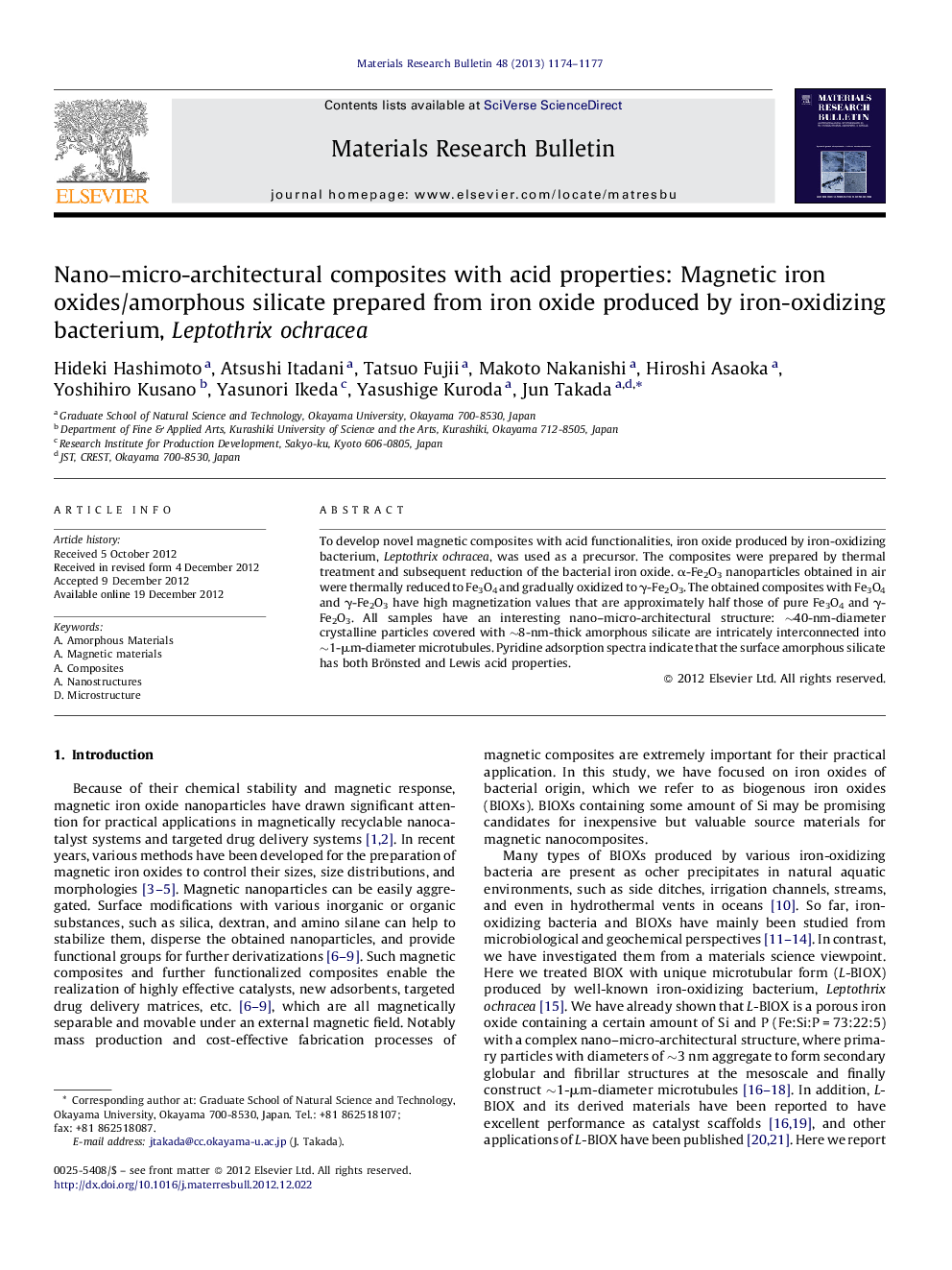| Article ID | Journal | Published Year | Pages | File Type |
|---|---|---|---|---|
| 1489514 | Materials Research Bulletin | 2013 | 4 Pages |
To develop novel magnetic composites with acid functionalities, iron oxide produced by iron-oxidizing bacterium, Leptothrix ochracea, was used as a precursor. The composites were prepared by thermal treatment and subsequent reduction of the bacterial iron oxide. α-Fe2O3 nanoparticles obtained in air were thermally reduced to Fe3O4 and gradually oxidized to γ-Fe2O3. The obtained composites with Fe3O4 and γ-Fe2O3 have high magnetization values that are approximately half those of pure Fe3O4 and γ-Fe2O3. All samples have an interesting nano–micro-architectural structure: ∼40-nm-diameter crystalline particles covered with ∼8-nm-thick amorphous silicate are intricately interconnected into ∼1-μm-diameter microtubules. Pyridine adsorption spectra indicate that the surface amorphous silicate has both Brönsted and Lewis acid properties.
Graphical abstractFigure optionsDownload full-size imageDownload as PowerPoint slideHighlights► Iron oxides produced by bacteria are attractive sources of magnetic nanocomposites. ► Fe3O4 and γ-Fe2O3 nanoparticles covered with amorphous silicate were formed from iron oxide of bacterial origin. ► The amorphous silicate surface had a specific site with both Brönsted and Lewis acid properties.
